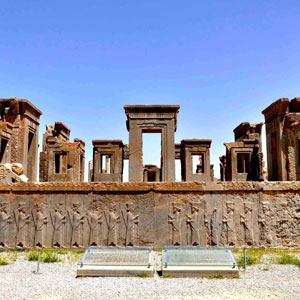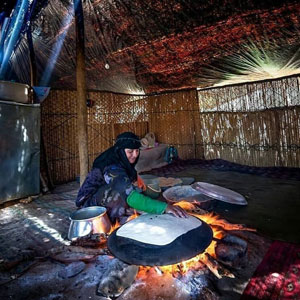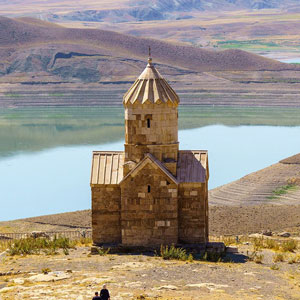 Signin with Google
Signin with Google Signin with Facebook
Signin with Facebook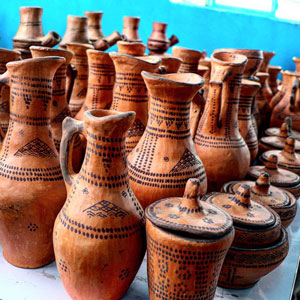 Culture
CultureChadorshab, a Sanctuary of Vibrant Designs
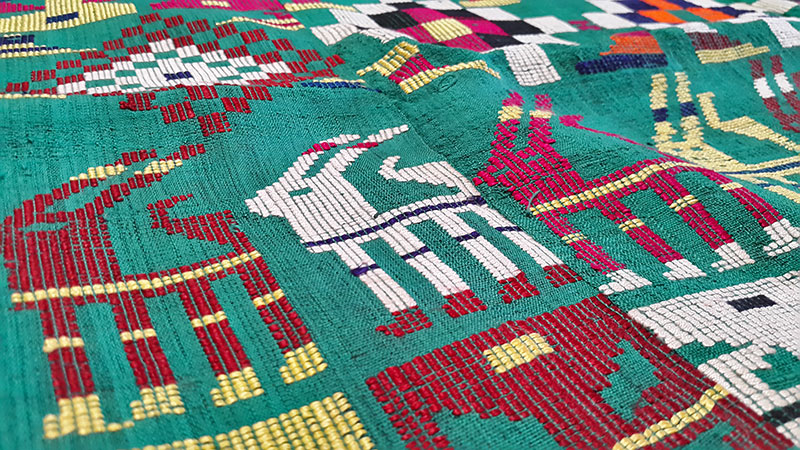
Walking between the green rice paddies or tea fields in the north of Iran, you can see working women wearing colourful waist wraps. It seems like having a piece of a rainbow around them. This colourful textile, known as Chador Shab, has been a part of the traditional customs of women along the Caspian Sea for centuries.
Qasem Abad, the World Craft City of Chadorshab
Qasemabad is a beautiful village near Roudsar city, in the east of green Gilan province. Besides the beauty of nature in this village and the happy local music and dance, the bright clothes of women are the most important reason for the fame of Qasem Abad village nationally and globally.
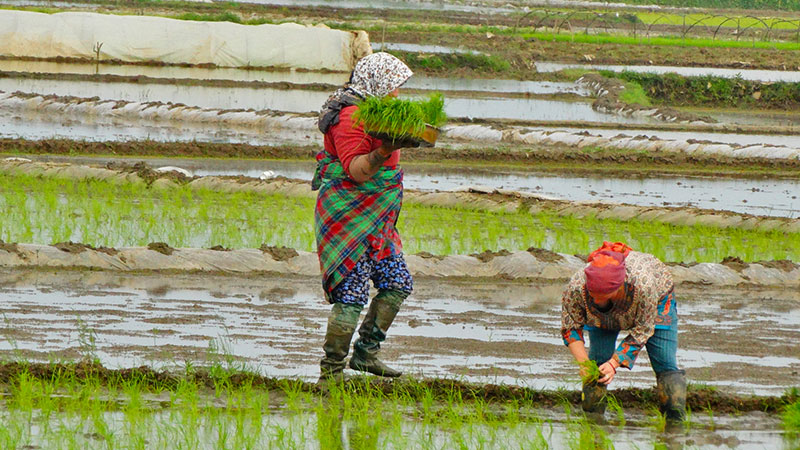
Ghasem Abadi women as an ethnic group have their specific customs. Long skirts designed with colourful horizontal stripes, Chador Shab as the waist covering, a top outfit, a short dark vest, and a scarf are the main elements of traditional clothes of women in this region.
Chador Shab is a unique piece in the style of women of Ghasem Abad. Locally called Lavan or Chorshab, Chador Shab is a silk or cotton fabric traditionally woven by the hands of women.
Not only in Qasem Abad but also in the old neighbourhoods of some other northern cities of Gilan & Mazandaran provinces, the sound of textile machines resonates. Older women and young girls use simple tools, the traditional weaving machines, to revive the heritage of their grandmothers. What makes the woven Chador Shabs in Ghasem Abad so exceptional is their beautiful geometrical patterns and bright colours.
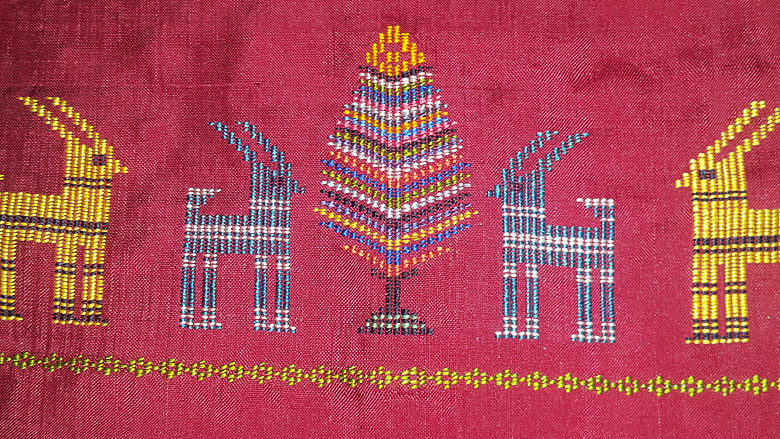
The ancient art of weaving fabrics
Iran has a rich history of fabric production. The Safavid era in the 16th century was the golden time of flourishing various types of textiles in the country. During this time, Gilan was a leading centre for producing fabulous silk fabrics.
Chador Shab leans in a 3000-history glory initially made with silk threads is a fine example of the art of weaving textiles in this part of Iran. Having an agricultural lifestyle, weaving was an art craft, somehow a hobby for long autumn and winter days when there were no real farming choirs to do. Although men used to make the wooden handloom, weaving Chador Shab was done mainly by women. Women take it as an opportunity to show their hopes, beliefs and their perceptions of life through delicate motifs.
For its authenticity, innovative production process, and most importantly its strong presence in the life of people for such a long time, the World Crafts Council added Qasem Abad to the UNESCO list of global handicraft cities and villages. Since December 2019, Qasem Abad became the world centre of Chador Shab weaving.

Beating wefts among wraps
The challenging process of weaving starts with spinning cotton or silk yarns. The next step is dying the prepared yarns. Previously natural substances like crushed turmeric, acorns, dried pomegranate peel, dried walnut peel and herbs were used to dye the wefts. Today, chemical colours provide a much more comprehensive range of dyed yarns. By boiling the threads in colours and water, the strings get desired colours. After getting dried, women use a wooden spindle to wrap the strings around spools.
Binding the warps, is the next step. Three or four women are hand in hand to put the long threads together based on the desired pattern and the final width of the fabric. Then it is time to roll up the settled threads and put them in the handmade loom, locally known as Pachal. The weaver now puts the chosen spool into the wooden weaving shuttle as the weft. Flying the weft between the wraps, gradually she makes a unique, delicate fabric. After each flight of the shuttle, the artist beats the threads with a tool named comb to put the wefts between the wraps and make an acceptably knitted textile.
Nature is the source of inspiration
Chador Shabs have a simple checkered design with vibrant colours or lots of colourful patterns on a monochrome background. Each Chador Shab is a unique piece of art craft as there is no prescribed design to follow. All the patterns on the Chador Shab come from the heart of the weaver. Inspired by the beauties of nature and traditions, artists create various motifs with colourful strings: chandelier, comb, women, horse rider, flowers, the cedar tree, butterfly, birds, and sea waves.
The geometrical patterns of Chador Shab represent different elements. For instance, a lozenge shape with a rectangle in the middle of a comb symbolizes femininity. Although this art craft seems simple, a crucial thing makes chadorshab weaving different from other types. Every pattern in chadorshab should be woven in reverse. It means you should imagine the shape in a mirror and then create it.
Moreover, the laudable represented motifs and the choice of colours show the wise use of simple natural elements to convey more profound ideologies, lifestyles, and rituals.
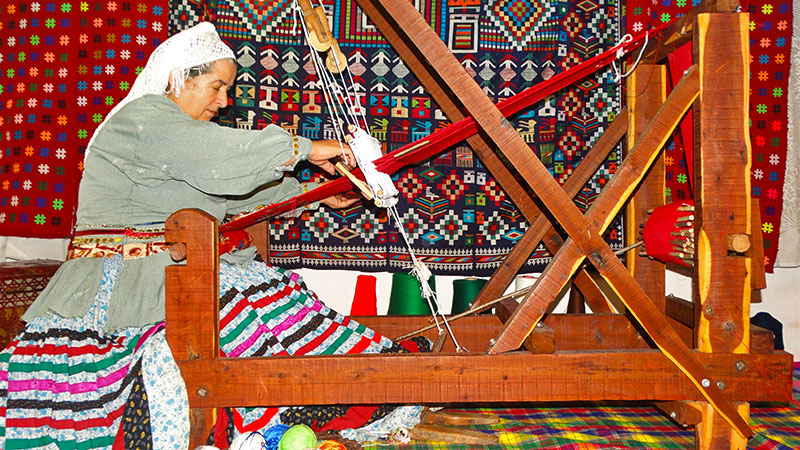
Chador Shab in Today's Market
Modern designers cleaning the dust of time off its face, renovate this exquisite traditional handicraft in various forms with updated functions. Previously Chador Shab was a piece to tide around waists and protected the waist from the humid climate of the region, as a handbag, as a baby wrap to carry the babies or as a bed cover. Nowadays, these colourful art pieces in different sizes, patterns, and colours could be a tablecloth, a cushion or a floor seat to set with your furniture.
By Samaneh Zohrabi / TasteIran

